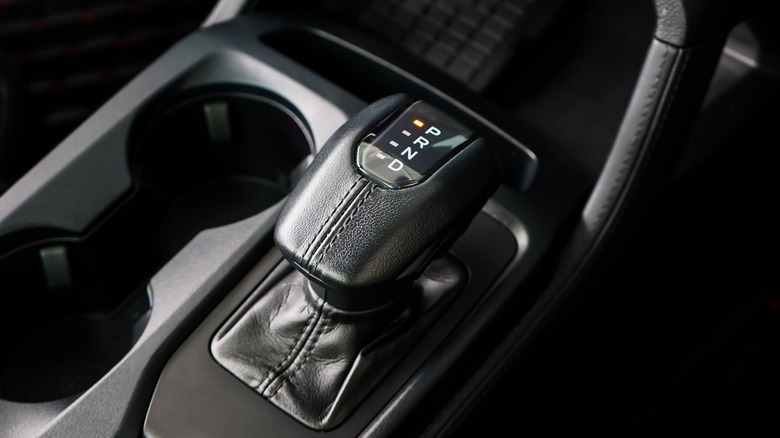Why You Should Avoid Shifting To Park Without Engaging The Emergency Brake First
Traditional automotive procedure dictates that, when you park your car somewhere, you should shift the gear selector to park and engage the emergency brake. It's definitely important to engage the emergency brake whenever you're parked, as it helps take the pressure off the parking pawl. Only shifting into park without using the emergency brake is a good way to inflict unnecessary damage on your vehicle.
Here's something to consider, though: when you park your car, which lever do you pull first? You probably shift the selector to park first, and then engage the emergency brake lever or electronic switch, right? Certainly, that's the common way to do it. In actuality, this is backwards from how you're supposed to do it. The best procedure for preserving your car's overall longevity, particularly in regards to your transmission, is actually to engage the emergency brake first, and then shift into park. It sounds strange, especially since you've probably experienced the horrible grinding sound that arises from having the emergency brake engaged while the car is still in drive. If you know how a transmission works, though, it actually makes a lot of sense.
Engaging the emergency brake first helps to protect your transmission
Normally, when you shift your gear selector into park, a little metal pin called a parking pawl latches into place within your car's transmission. When the pawl is locked in, the transmission's output shaft won't turn, which also halts the rotation of the drive wheels, stopping the whole car.
Here's the catch: when you shift your car into park, do you feel it lurch forward a little bit? That's the result of your transmission trying to spin up against the parking pawl. On the surface, this is fine. You don't want your car to move when you're in park, after all. However, that little lurch has the full force of the car's weight behind it, all of which is being absorbed by your transmission. That damage can accumulate over time, gradually wearing down your transmission, as well as the parking pawl. If you've owned your car for a long time and have been having transmission problems, this could be a contributing factor.
This brings us to the emergency brake. Engaging the emergency brake after you've already shifted into park takes the force off the parking pawl and transmission, but only after it's already endured that lurch. If you reverse the order, engaging the emergency brake first and then shifting into park, that force will instead be absorbed by the braking system, which is more robust and resilient. So long as you remember to come to a complete stop with your regular brakes before engaging the emergency brake and shifting into park, it'll do your car's transmission a lot of good in the long run.

